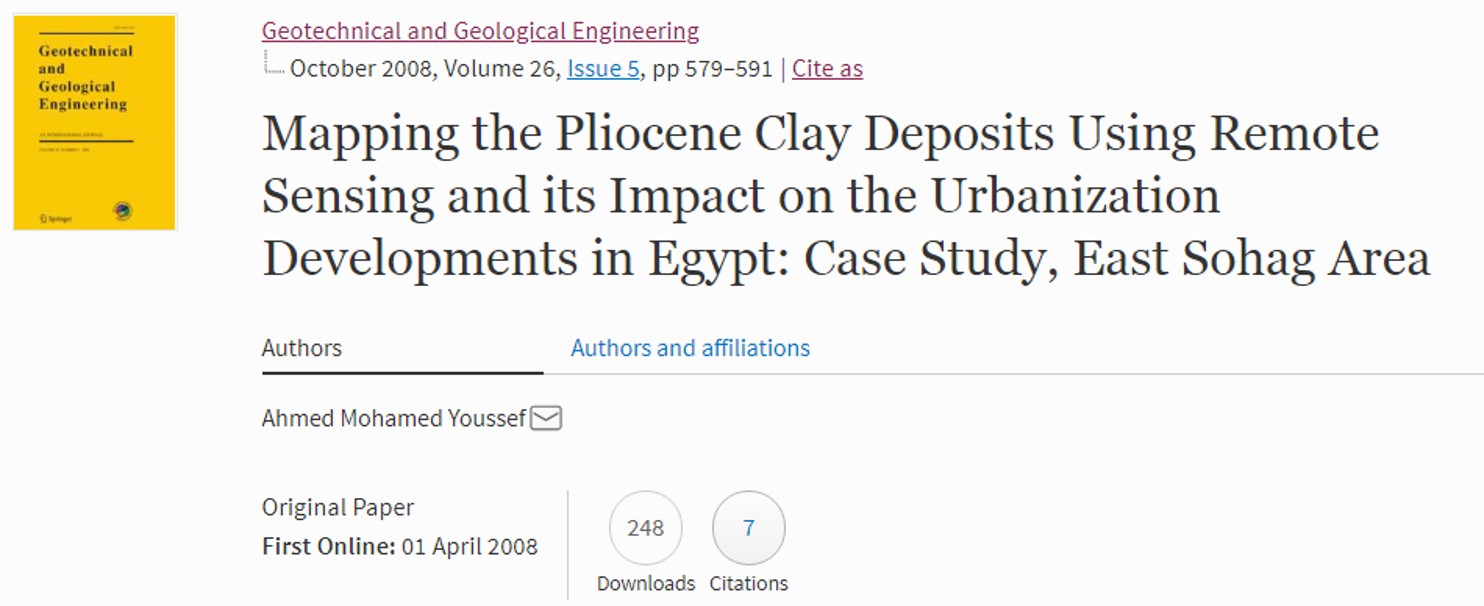In the current study, Thematic Mapper image was compiled along with field and laboratory investigation results to map the Pliocene clay deposits. These deposits have high swelling potential; consequently they will have a negative impact on the urbanization expansion surrounding the flood plain zone (Low desert zone) in Egypt. Principle Component and Minimum Noise Fraction techniques with the help of supervised classification were successful in the mapping of these deposits. The interpretation shows that the Pliocene clay deposits occupy most of the wadis terraces and part of the wadis floors, and sometimes they covered by Quaternary deposits (1–5 m of sand and gravel). The physio-chemical characteristics of these deposits indicate that the Pliocene clay ranges from silty clay to clay with small amounts of sand. Laboratory analysis (Atterberg limits, saturation degree, and cation exchange capacity) indicate the swelling characteristics of the Pliocene clay. Different classification systems were applied and all reveal the expansive nature of this soil, which should be taken into account for future development in the area.


